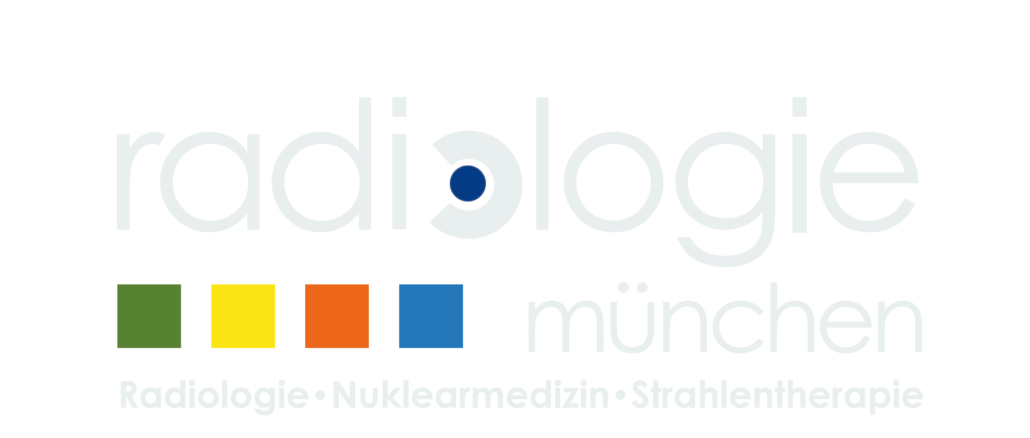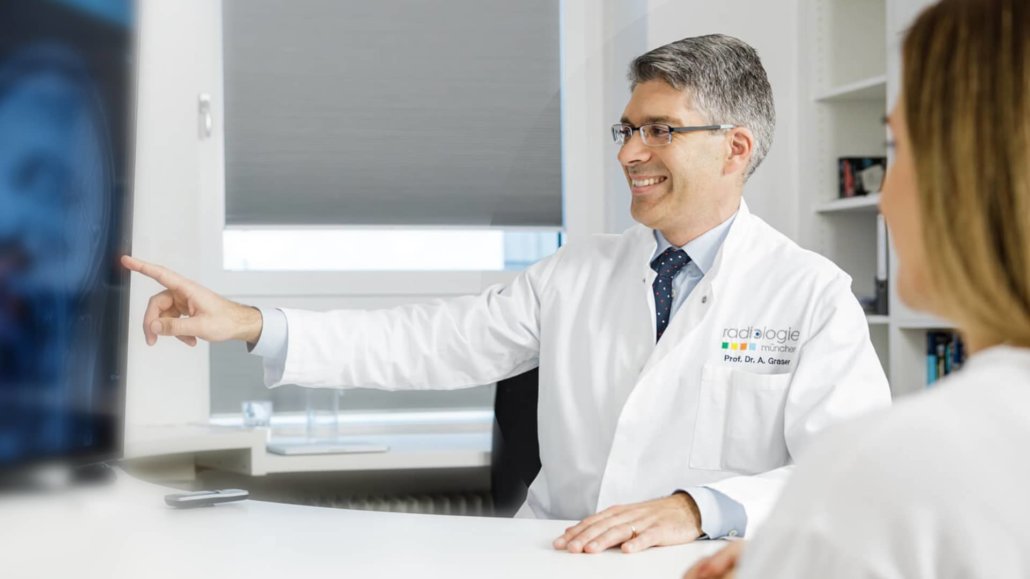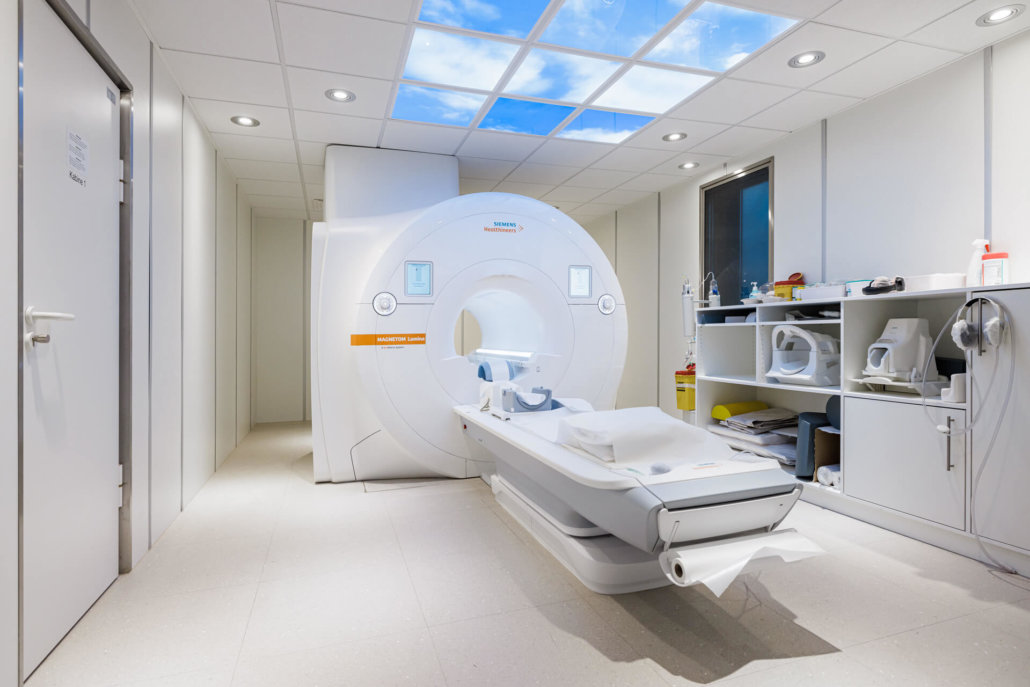Colonoscopy virtual
Virtual colonoscopy is a gentle examination of the colon using magnetic resonance imaging (MRI).
Unlike conventional colonoscopy, MR colonoscopy does not require any instruments to be inserted into the patient’s body. Colorectal cancer screening is performed purely virtually by scanning the abdominal cavity from the outside using MRI. The resulting images are then assembled into a three-dimensional representation by special analysis software, so that the inside of the intestine can be viewed in a virtual journey.
approx. 30 min.
Examination time
2-3 h
Stay in the practice
Where can you have a virtual colonoscopy in Munich?
Diagnostics in colorectal cancer screening using virtual colonoscopy is one of our core competencies. We offer this examination at various locations – choose the best location for you and contact us.

MRI of the intestine – cancer screening and therapy basis
For the early detection of colorectal carcinoma (colorectal cancer), conventional colonoscopy (colonoscopy) is recommended in Germany in addition to the Haemoccult test (test for hidden blood in the stool). However, mirroring requires intensive bowel cleansing. Due to the use of the endoscope, the examination is considered invasive, i.e. an intervention.
Virtual colonoscopy using magnetic resonance imaging (also called MR colonography or MR colonoscopy) was developed to minimize the stress on patients during colonoscopy. Virtual colonoscopy does not require radiation exposure and offers the highest quality images. With Prof. Dr. Anno Graser we have one of the leading experts in the field of virtual colonoscopy in our ranks. For many years, he helped develop the procedure and advanced it in clinical trials.
When is virtual colonoscopy with MRI an option?
Virtual MR colonoscopy is ideally used when conventional colonoscopy is futile or had to be aborted, e.g., due to narrowing or kinking. At the patient’s request, it can also serve as a screening examination for the early detection of colorectal cancer. Since colorectal cancer in most cases develops slowly over many years from benign precursor changes known as polyps, it can be prevented by the timely detection and removal of these polyps. Virtual colonoscopy is a very safe method to detect such polyps.
Virtual colonoscopy is unsuitable for:
- Investigations of unclear abdominal pain
- the detection of familial adenomatous polyposis (FAP)
- the determination of inflammatory activities in Crohn’s disease or ulcerative colitis
Although recent research has shown that virtual colonoscopy using MRI is nearly equivalent to conventional colonoscopy in terms of diagnostic accuracy, the examination is not usually covered by public health insurance in Germany. Patients must bear the costs of the examination themselves – in individual cases, however, medical contraindications to “normal” colonoscopy may result in your health insurance covering these costs.
What should be considered before the examination?
Virtual colonoscopy requires a clean intestinal mucosa. Therefore, we recommend a reduction of high-fiber and fatty foods in the last two days before the examination. Therefore, avoid whole grain bread, cereals, raw fruits, vegetables, cheese, jam, mustard, garlic. You will receive the detailed instructions for this after registering for the examination.
Basically, the preparation begins in the afternoon before the examination day. From 6 p.m. on the day before, they are only allowed to have drinks and soup, and on the day of the examination itself they must remain completely sober.
After the examination
Immediately after the evaluation of the examination, you can go about your normal daily activities – so you only need to take one morning off for this examination.
How does the examination proceed?
Virtual colonoscopy using magnetic resonance imaging is a very fast and low-stress examination. The previously cleaned intestine is filled with lukewarm water on the examination table to unfold the intestinal wall and make it presentable. This is usually not painful.
The actual acquisition of the images takes place on a state-of-the-art multi-channel MRI scanner of the latest generation. This produces fine cross-sectional images from inside the body, and the tissue structures of the intestine (and surrounding tissue) are recorded layer by layer. In order to obtain the best possible image quality, we will ask you through headphones to hold your breath briefly during the recording phases.
From this total of about 2,000 high-resolution individual images, our special state-of-the-art 3D post-processing workstation then calculates a three-dimensional representation of the organ. This enables our specialists to take a virtual trip through the intestine on the screen, similar to a classic colonoscopy. Occasionally, the technique of three-dimensional imaging of the gastrointestinal tract using MRI is therefore also referred to as MR-based virtual endoscopy. In MR colonoscopy, the assessment of anatomy and possible pathological changes of the intestine is performed immediately after the on-site examination.
There are hardly any side effects due to the lack of radiation and the unnecessary administration of contrast media. Loud knocking noises occurring during the scan in the MRI are normal and result from the rapid change of magnetic fields. To reduce the volume exposure during the examination, we have headphones available for you.
MR Sellink
Information about the small intestine examination with MRI
MRI
Interesting facts about magnetic resonance imaging (MRI)
Bowel diagnostics
Back to the overview of bowel diagnostics


